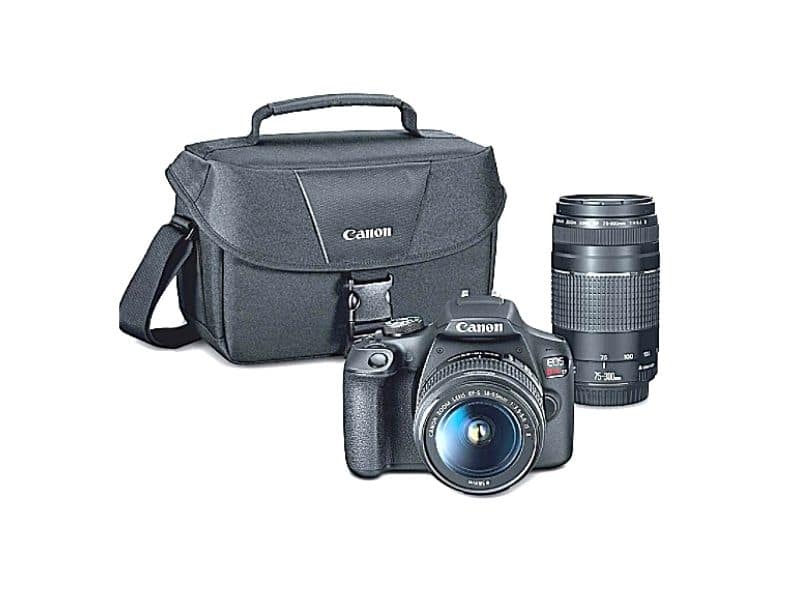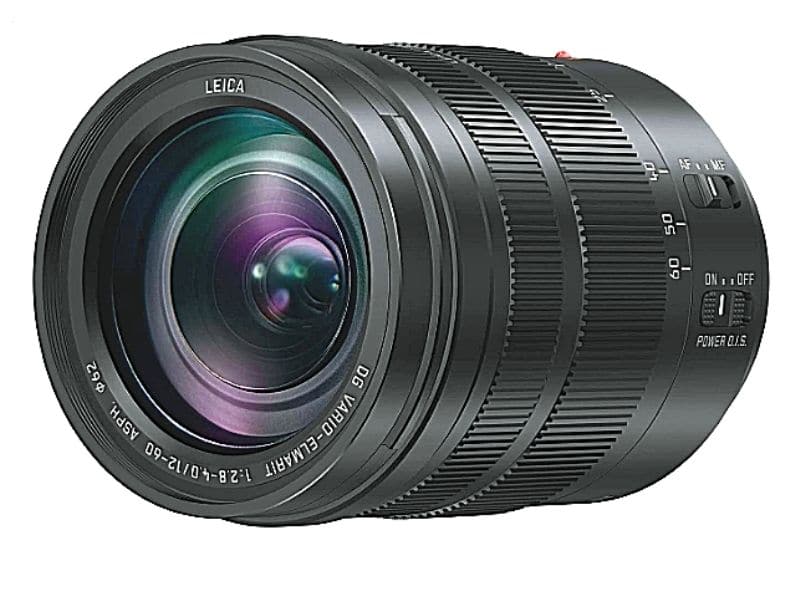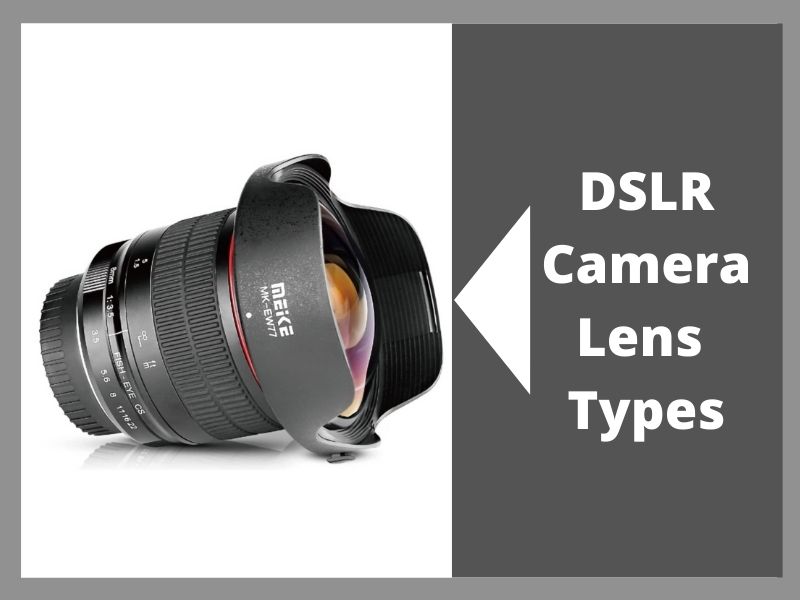As an Amazon Associate I earn from qualifying purchases.
Camera Lenses are like glasses for the camera. Without it, nothing would seem to be in focus. If you have an idea about camera lenses then you probably know how important this feature is, whether in terms of photography or just taking pictures in general. Generally, there are various types of camera lenses out there on the market that many beginners to professional level photographers opt for according to their photography needs. Professional photographers or people who are interested in photography know the value of lenses even though in terms of defining it, these are just pieces of glass that bend to pass light through a camera.

Even though for now, we’ve had enough Introduction To Camera Lens, let’s set that aside for a while and about another type of a Camera Lens. On this particular topic, we would be discussing DSLR Camera Lenses and their types. DSLR Cameras have become super popular in the late 2010s and nowadays no occasions or any sort of professional photography could compete without these. The reason behind the fame of these DSLR Cameras is because of their high tech features that no other camera has been able to achieve so far. Therefore, many famous brands like Canon,
Nikon and Sony have come up with different versions and models of these DSLR Cameras.
I’m very sure that we all have either witnessed or has known about DSLR Cameras in general. But do you know what makes a DSLR camera special? It’s the Lenses. Yup, you got that correct. Ordinary cameras that were used in the past had fixed lenses. But these DSLR cameras have interchangeable lenses. Meaning, you can change the lenses anytime you want. This not only adds varieties in your photography career or passion but also helps you travel easily with it. So you can capture your pleasurable moments anytime anywhere with just click.
We are now about to discuss in-depth about DSLR Camera Lens and also the tips and tricks that can come in handy for you if you have an unexplainable obsession for photography.
Contents
What is a DSLR Camera Lens?

DSLR Camera lenses are camera lenses that are more specifically used for DSLR cameras. The term DSLR stands for the digital single-lens reflex camera. Which in short many would like to address as a DSLR camera? Now, what is so special about DSLR camera lenses? These DSLR cameras have the features of a single-lens camera with a high tech reflex and digital imaging sensor. Hence, their lenses are also known to be very special and none other like the ordinary. Well most commonly, after the 90’s people now use the DSLR camera lens and the camera itself for professional photography.
However, the main reasoning behind the popularity and the wave of uniqueness that these lenses bring is because of its interchangeable lens quality. The difference between a DSLR and a normal camera lens lies solely in the designs scheme. There is a primary differentiation in how reflex of DSLR Camera works by passing light through a lens then changing its shape to send the image in the prism.
As we now know that DSLR camera lenses are interchangeable and consist of a high defining feature that enables one to click the most professionally taken aesthetics of a certain moment. On the other side of the spectrum, this interchangeable facility provides portability. Meaning, you can roam around with as many DSLR camera lenses as you want and change them now and then according to your photography needs. The revolution of these DSLR camera lenses has not only been life-changing but also a blessing for many professional photographers out there.
As in the earliest renaissance of the cameras, lenses weren’t as advanced. Then technology hit a milestone and came up with SLR or Single Lens Reflex cameras, which most commonly had fixed lenses so the focal length, aperture, and all the other properties of that certain camera lenses were fixed. This went on for a while and until technology again decided to hit a century and come up with DSLR or Digital Single Lens Reflex Cameras which have interchangeable lens features its lenses are higher in terms of definition and quality.
Types of DSLR Camera lenses
As we have previously discussed a lot of information about what actually is a DSLR camera lens and how it works now it’s very important that you get to know about the types and the features if DSLR Camera lenses. Having even the slightest knowledge about DSLR camera lenses even if you do not own a DSLR camera may improve the way you pose in front of a professional DSLR camera whether you’re a model, spokesperson or just having a little photo-shoot on a big occasion.
Prime and Zoom lens
Generally, when speaking of different types of lenses there’s usually two major categories of DSLR Camera Lens. One is Prime and another one is known to be a Zoom lens. A lot of people get confused between these two and end up buying one that they simply wouldn’t be able to use or may not like at all after the purchase. So the necessity for learning the difference between these two key lenses is unexplainable.
So what is the difference between a prime lens and a zoom lens? The very difference that lies between the two lenses is in their focal length. Zoom lenses are known to have a range of focal lengths whilst the Prime Lenses have a single focal length.
Zoom lenses
These lenses have two focal lengths cited in their measurements. For instance, 70 – 200mm can be identified as a zoom lens. As it contains two numerals or ratio of focal length. The reason behind this is because a zoom lens can change its focal length depending on the measurements or ratio mentioned. Such as a zoom lens of 70 – 200mm can change its focal length from 70 to 200mm focal length, unlike prime lenses.
ZOOM LENS

The following focal lengths mentioned can be identified as a zoom lens.
- 70 – 200 mm
- 18- 55mm
- 70 – 300mm
Prime Lens
On the other side of the spectrum, Prime Lenses are considered to be lenses that has a single focal length number. These lenses do not have the flexibility to change the focal length and has a fixed focal length. To identify a prime lens all you need to do is just check the Focal length number. For example 24mm is considered a prime lens because the focal length of this lens is fixed to 24mm and can’t be altered any longer than that. The following list are examples of prime lenses.
PRIME LENS

24mm
35mm
50mm
85mm
100mm
Basic DSLR Lens Types
Previously, we’ve read about two different CATEGORIES of lenses but now we will be discussing the main TYPES of different DSLR lenses that are out there. Many people get confused between the types and categories of DSLR lenses. Well, generally the lenses that we are going to talk about now fall into both the categories of lenses we discussed, Prime, and Zoom lens. These lenses can come in both versions but their functions and quality of the image would the different. The main reason behind differentiating the categories is to ensure whether the focal length is fixed (Prime) or not fixed (zoom). But this differentiation is between the Angle of View and Field of View (FOV)
The following list contains the basic types of camera lenses that are available on the market. You can pick any of them and use them according to your photography needs.

- Standard Lens: When speaking of differentiating lenses by their FOV, the first one that comes into mind is Standard Lens. A standard lens is basic forms of a lens and it contains the focal length that a healthy naked human eye can see. In simpler words, it captures images from the FOV of your eyes. The focal length of these lenses can vary from 35 – 70mm but the standard focal length of this lens is 50mm which gives the maximum view of what your eyes normally see.
- Wide Angle Lens: Wide Angle Lenses have a wider FOV than any other types of lenses out there. The name itself speaks for the lens. It helps in capturing all the objects in an image and provides a wider angle. Any lens that below 35mm those are considered wide-angle lenses. For instance, if the focal length of the lens is 24mm, we must assume that is a wide-angle lens.
- Telephoto Lens: Then there come the most popular Telephoto Lenses. Telephoto lenses can be identified by their focal range. Any lens that is above 70mm is ideally considered to be a Telephoto lens. For example, 85mm, 74mm, 600mm, and 100mm are telephoto lenses. The FOV of this lens is pretty narrow and it is more commonly used as a zoom lens. It captures and focuses objects from far apart. Hence the name itself speaks for itself.
- Macro Lenses: Many people confuse Macro lenses with Zoom lenses. The truth is Macro Lens is nearly a type of Zoom lens but doesn’t fall under the category. Macro Lenses are which lenses that many highly experienced professional photographers opt for. These lenses are unique that despite having the maximum close-up view that you can get, it delivers a sharp and well-defined image. Macro lenses are mostly used in Wild Life photography, Sports photography, or just general aesthetic documentation images. It cuts out unnecessary objects from the images and enables you to get the maximum level of details that even the naked human eye is unable to see.
- Special lenses: Now these lenses are unique and fancy as you can already tell by its name. These lenses are generally used for fancy photo shoots and add a tint of uniqueness in your photography. There are various types of specialty lenses. The more commonly used and generally more popular ones are Fisheye, Tit shift lens, and Infrared Lens.
- Fisheye Lens: These lenses fall into the category of specialty lenses. The lenses enable you to capture the width of 180 degrees because of the bigger ratio of FOV (Field of View within them). These lenses are often considered a specialized version of a wide-angle lens that is most commonly produces extreme width. So much, that it changes the straight lines on the image into curves. These lenses provide curvature photographs where the straight lines are bent into convex, circular, or even oval while it disrupts the point of view and creates a 180-degree image. The focal length in these lenses varies from 7 to 16 mm.
- Tilt and Shift Lens: Often times there are objects in an image that you can’t reach with a normal lens. Tilt and Shift lens comes in handy at that time. This lens enables you to alter the perspective of an image. Therefore, the parallel lines in this image don’t attach to one another leading it to prevent distortion. If you are opting for a lens that has a selective focus feature that focuses on a specific focus then Tilt and Shift is a good choice. Tilt and Shift also falls under the category of Specialty Lens
- Infrared Lens: Another lens that falls under the category of Specialty lenses. These lenses are made so unique that it captures pictures as though they were hand-painted but with the most detail. These lenses are also known as IR lenses and there’s a different type of Photography dedicated to this called IR Photography. This helps the images appear more dramatic. For instance, it can capture the eyes trapped inside of a pair of sunglasses, It creates a milky effect and angelic effect on the skin but with a lot of high definition and detailing.
- Image Stabilization lens: Image Stabilization lenses have small gyro stabilizer sensors and servo actuated lens elements that prevent the effect of distortion whilst the object of the image or the camera is shaky. This lens is very useful for taking images in crowded places and even in low-light conditions.
Things to keep in mind before buying DSLR Camera lens
DSLR Camera lenses can be very pricey to buy and its no child’s play to handle them. If photography isn’t your passion or something you’re looking forward to pursuing for a longer period of time then it is wise not to buy a camera lens. However, on the other side of the spectrum if you’re very enthusiastic about getting your hands upon these lenses then give this a read.
DSLR Lens is very expensive: This is true, DSLR lenses are very expensive to buy. So you must choose a lens that you can work with for multiple purposes that can be useful. You need to give a lot of thought before buying a new lens.
DSLR Lens is very sensitive: You need to take care of these lenses every now and then. These lenses need to be handled with a lot of care. If you end up having scratches on the lenses then you can consider that the whole lens has now been ruined. So make sure to keep it safe and secured and always clean it.
DSLR lenses are not universal according to the brand: Not all DSLR lenses will fit in your camera. The compatibility of the lenses depends on their manufacturers and brands. A Nikon DSLR lens isn’t likely to fit into a Canon DSLR camera. So ensuring your manufacturer before buying a camera lens is the most important of all.
DSLR lens Maintenance: DSLR camera lenses as already mentioned above. Therefore, maintaining them is vital. Always make sure to cover your lens shutter and keep it inside a leather lens cover when you’re not using it. Even when you’re traveling, keep these lenses away from heavyweights.
Conclusion
DSLR Camera Lenses are the most commonly used camera lens in the market. Even though these can get very expensive but it is forever worth the purchase. DSLR Lenses has features that no other camera lenses could provide so far. So if you own a DSLR camera, you may notice that it comes with an 18mm camera lens. Which isn’t a fair deal if you’re opting for professional photography.
Hence, learning about camera lenses is very important. You must know where you are outing your money. Learning about each and every type of camera lens, in general, will have you pose better in images and photography in general. Often time’s people tend to forget the importance of learning about lenses and rather throw their money off inexpensive lenses which they can’t use for the good. Those are the desperate times that you need to learn that photography isn’t a child’s play and one has to have ample patience if pursuing so. If you have read the full article thank you so much for staying till the end. Hope this helps you expand your knowledge in terms of DSLR Camera lens.
As an Amazon Associate I earn from qualifying purchases.

